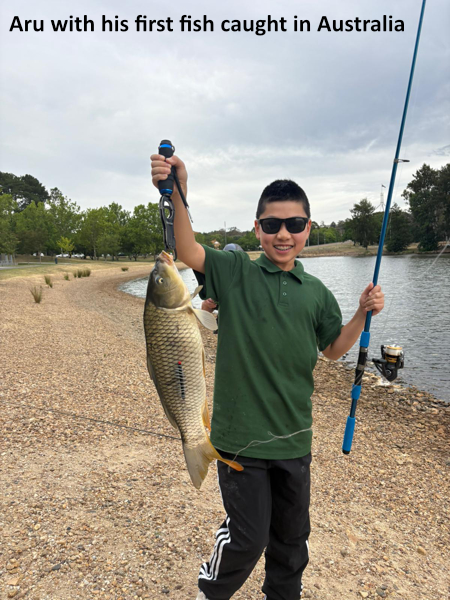Xenii tells me a chair was left at the Christmas bbq. The owner can get it back from Xenii
Category Archives: News
Amended Constitution
the constitution was amended via a Special General Meeting conducted in conjunction with a normal meeting. Changes were principally related to our non-profit status, amending the facility to appoint temporary honorary membership for visitors and some minor clarifications. Has been fully processed through the ACT authorities
available here
https://canberra-anglers.asn.au/club_process/club_process.html
December 2025 Burley Line (Issue 218)

Apologies for the December issue being late, I was a bit ‘otherwise engaged’ – will tell you about the Sri Lanka cyclone over a beer. Anyway, this means it’ll be a bit of a Christmas edition given there won’t be one in January.
It was great to see one of our new juniors (Aru, coached by the ever generous Peter) get his first Australian fish – well deserved photo of the month/cover shot. Here’s hoping for many more and adding to his species list. Scaling on the photo suggests 55 cm.
Reports here from near and far along with a big list of interesting snippets found by ‘cub reporter’ Greg S.
With Christmas and New Year approaching take care when travelling and we’ll see you in 2026.
Carp Outing 18 Jan 2026
Coming Events
Next Meeting
11 Feb 2026 – our first meeting for 2026 – normal time of 7:30PM at Raiders/Weston club.
Next Activities
18 Jan 2026 – Carp outing led by Claude. More details here.
28 Jan – Fly tying via Zoom 7:30 – carp fly led by James
Fly Tying 26 Nov 2025 – Pheasant Tailed Nymph and Blue Collared Pheasant Tail Nymph
Below are the recipes and some links for viewing, these are for the fly tying that was led by Lachy.
Pheasant Tailed Nymph
Unweighted version
Hook: Hanak H 230 or H 280 or sturdy wet fly hook sz 12 (but can go down to sz 20). Tiemco TMC 100SP-BL also works well
Weight: lead wire optional or use unweighted as a dropper with a weighted nymph or split shot
Thread: brown or rusty coloured thread in 70 Denier. I prefer Brown Semperfli nano silk in 50D
Tail, Abdomen, Wingcase and Legs: Natural Pheasant Tail fibres
Thorax: Peacock herl
Rib: Copper wire in size 0.2mm or UTC Brassy size
Video link – can be used as a guide: https://www.youtube.com/watch?v=jXG_0bcrWBE
Blue Collared Pheasant Tail Nymph (aka The Blue Ninja)
Hook: Dohiku HDJ in size 14, 16 and 18 or your preferred jig nymph hook
Bead: Copper coloured tungsten bead. Normally go 3.5mm on sz 14, 3.0mm on sz 16 and so on. But it also works well sizing up the bead on a smaller hook eg 3.5mm bead on sz 16 hook, 3.0mm bead on sz 18 and so on.
Tail: Coq de Leon (CDL) preferably in Ginger Speckle, but any CDL will do
Rib: Copper wire in size 0.2mm or UTC Brassy size
Collar: Uni mylar 1/32” in Holo lt Blue, alternatives Semperfli Holographic Tinsel 1/32” in Kingfisher colour, or Wapsi/UTC Holo Tinsel medium in blue
Resin: Solarez UV bone dry thin or your preferred thin, clear UV resin
Video link – mine uses slightly different materials and works well in our region but this is a useful guide: https://www.youtube.com/watch?v=RHu1eTdqeR0&t=104s
Keyword wetfly nymphfly
February 2026 Jindabyne Trip
The lodge has booked us in for Fri 13 to Sun 15 Feb.
For your forward planning at this time. I’ll advise cost and full details closer to the date.
2025-2026 Program
The program page https://canberra-anglers.asn.au/blog/program/ has been updated for the forthcoming season. Fly Tying sessions now have their topics and leader provided.
Dates for Feb trip to Jindabyne have been added and Nov saltwater trip amended.
National Park Passes for Defence Veterans
Jason spotted this. I was aware Gold Cards could get a free Concession Pass but now all cards including the DVA Veteran’s White Card can get this concession.
https://www.nationalparks.nsw.gov.au/passes-and-fees/conditions-of-use?utm_medium=short-url
A simple on-line process, though my validation required sending an image of the card as using the card number didn’t work.
